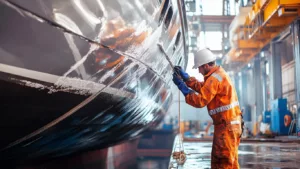In the world of the petroleum industry, it’s key to keep pipelines in top shape. Adhesives used for fixing pipelines are crucial. They help keep our infrastructure strong and dependable. In this detailed guide, we’ll look at the various kinds of adhesives used in petroleum pipelines. We’ll also discuss their uses, and the new repair technology available. Whether you’re a pro or a DIY fan, our goal is to provide top-quality products. These ensure your pipeline repairs are durable and reliable.
Key Takeaways
- Pipeline adhesives are vital for maintaining pipeline integrity.
- Understanding different types of petroleum pipeline adhesives enhances repair efficiency.
- Innovative pipeline repair technology ensures lasting solutions.
- Quality adhesives contribute significantly to the performance of pipeline repairs.
- This guide is designed for both professionals and DIY enthusiasts.
Understanding Pipeline Adhesives in the Petroleum Industry
Adhesive products are key for pipeline maintenance in the petroleum sector. They secure and fix pipelines carrying various petroleum products. Knowing about these adhesives is crucial for the integrity of important systems.
What Are Pipeline Adhesives?
Pipeline adhesives are made to bond materials in tough conditions. They handle extreme pressure and temperatures in pipelines. Choosing the correct adhesives boosts safety and pipeline life.
Importance of Adhesives in Pipeline Repairs
High-quality adhesives are vital for less risk of leaks. This prevents costly operations and environmental dangers. Using these adhesives improves safety, efficiency, and the lifespan of pipelines.
- Increased safety – They reduce leak-related hazards.
- Enhanced efficiency – Repairs are quick and dependable, ensuring smooth operations.
- Prolonged service life – Strong bonds help pipelines last longer.
For more information on specific adhesive solutions, check out 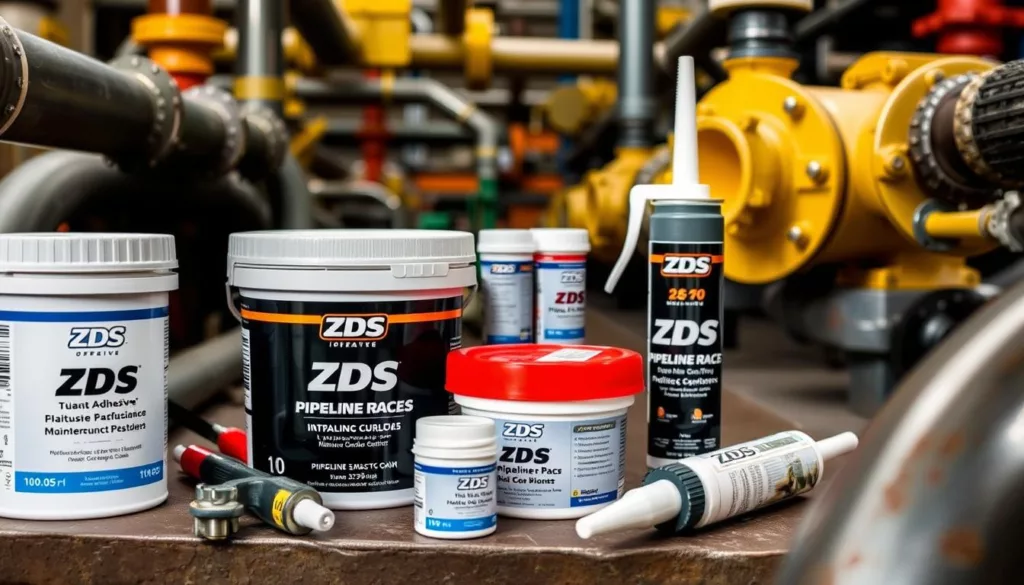
Types of Adhesives Used in Pipeline Repairs
Choosing the right adhesive is key for lasting pipeline repairs. Several adhesives are available, each with unique benefits for the petroleum industry. It’s important to know the differences to pick the best one for the job.
Solvent-Based Adhesives
Solvent-based adhesives are known for quick curing and strong bonds. They work well for many pipeline repairs, offering fast fixes. These adhesives bond metals and plastics, ideal for various pipeline types.
Epoxy Adhesives
Epoxy adhesives stand out for their durability and chemical resistance. This makes them great for tough petroleum settings. They provide strong bonds that last, reducing the need for more repairs.
Polyurethane Adhesives
Polyurethane adhesives are flexible and resist environmental damage. They work well outdoors, handling movement and temperature changes. These adhesives are perfect for pipelines in challenging conditions.
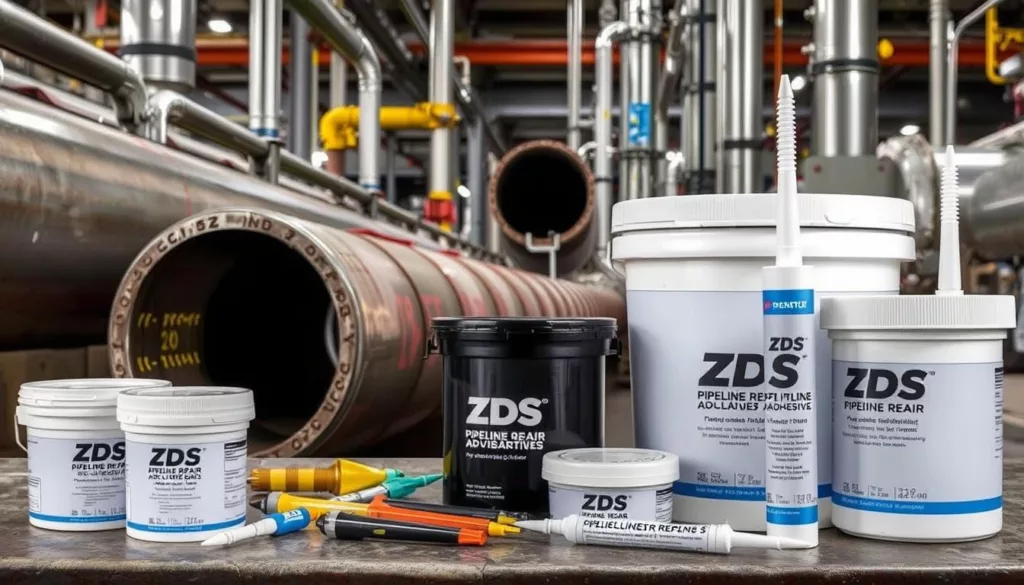
| Type of Adhesive | Main Benefits | Typical Applications |
|---|---|---|
| Solvent-Based Adhesives | Quick curing, strong bond | General repairs, bonding metals/plastics |
| Epoxy Adhesives | High durability, chemical resistance | Critical petroleum applications |
| Polyurethane Adhesives | Flexibility, environmental resistance | Outdoor repairs, dynamic environments |
Key Properties of Effective Pipeline Adhesives
Bonding agents for pipeline repair are crucial for industrial use. They must be durable and reliable. Knowing these key properties boosts the success of pipeline repair solutions. This ensures they last long, even in tough conditions.
Chemical Resistance
Pipeline adhesives need to resist chemicals to be effective. They have to stand up to hydrocarbons and harsh substances. This stops them from breaking down, keeping repairs solid for the pipeline’s life.
Temperature Resistance
Being able to handle different temperatures is also critical. This quality ensures adhesives work well in the varied conditions of the petroleum industry. They can deal with temperature changes without losing strength. This keeps the pipeline safe and intact.
Adhesion Strength
The strength of an adhesive’s bond is crucial. It must hold materials tightly under pressure and stress. When choosing adhesives, consider their bond strength as it’s key to repair success. For more info on choosing the right adhesives, check out this resource on adhesive solutions.
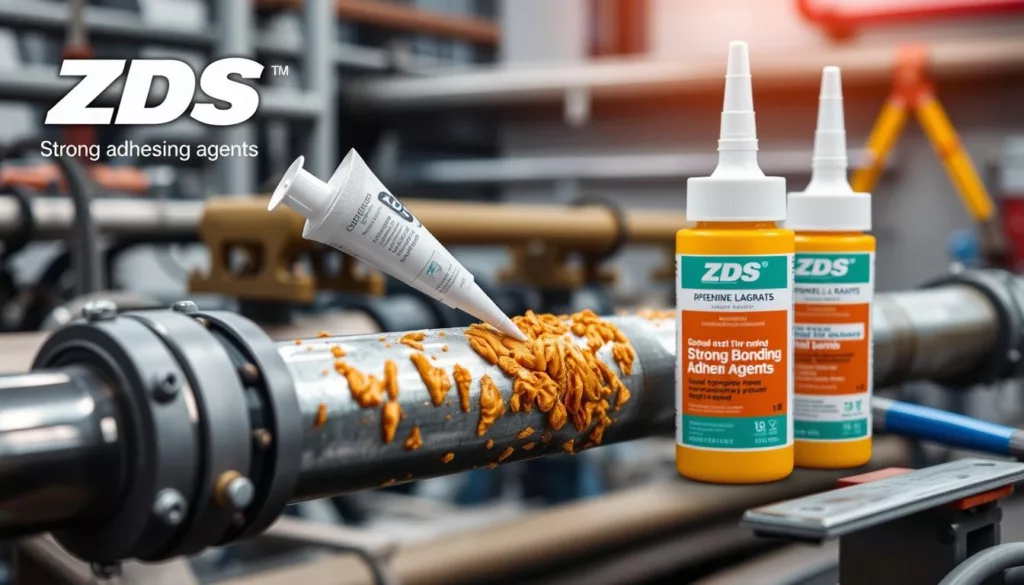
Application Techniques for Pipeline Adhesives
To ensure pipeline repair projects succeed, knowing how to apply adhesives is key. Mastering these methods boosts the performance and longevity of repairs.
Surface Preparation
Before applying adhesives, it’s crucial to prepare the surface properly. This means:
- Cleaning the surfaces to remove dirt, grease, or rust.
- Priming surfaces, which can aid in adhesion.
- Inspecting for any imperfections that may affect bonding.
Mixing and Application Guidelines
It’s critical to follow the right mixing and application guidelines in pipeline repair. Keep in mind:
- Adhere to the manufacturer’s specified mixing ratios to ensure optimal performance.
- Use mixing containers that are clean and free from contaminants.
- Apply the adhesive evenly and promptly to prevent premature setting.
Curing and Setting Time
Understanding curing and setting times is crucial for a strong bond. Important tips include:
- Allowing adequate time for the adhesive to cure before applying stress.
- Monitoring environmental conditions that may affect curing rates.
- Testing bond strength before putting the pipeline back into use.

Advantages of Using Adhesives Over Traditional Repair Methods
In the petroleum industry, innovative solutions are vital. They help keep pipelines working well. Using adhesives for pipeline repair has many benefits over old methods.
Cost-Effectiveness
Pipeline repair adhesives are a budget-friendly choice. Traditional repairs, like welding, cost more in labor and materials. Adhesives make the fixing process simpler and less expensive.
Reduced Downtime
Keeping pipelines running is essential. Adhesives cut down repair time, so operations can quickly start up again. This helps make more money and keeps productivity high.
Improved Longevity
High-quality adhesives create strong bonds that last. They hold up under tough conditions, making repairs last longer. This saves time and resources over time.
| Repair Method | Cost | Downtime | Longevity |
|---|---|---|---|
| Pipeline Repair Adhesives | Low | Minimal | High |
| Welding | High | Significant | Medium |
| Mechanical Fastening | Medium | Moderate | Medium |
Regulatory Standards for Adhesives in the Petroleum Industry
Adhesives in the petroleum industry need regulation for safety and the environment. Following these rules is crucial for worker health and reducing harm to nature. It’s important when choosing and using adhesives for petroleum pipelines and maintenance.
Safety Regulations
The safety of petroleum pipeline adhesives is managed through specific regulations. These include:
- Material compatibility assessments
- Requirements for hazard communication
- Guidelines for proper handling and storage
Adhering to these rules makes sure adhesives are safe during use.
Environmental Considerations
The petroleum industry is focusing more on eco-friendly adhesives. This move is in response to environmental concerns. The goal is to create adhesives that are less harmful to the planet. Factors to consider are:
- Biodegradability of adhesive components
- Recycling potential of used packaging
- Energy-efficient production processes
These efforts support sustainability goals without compromising quality.
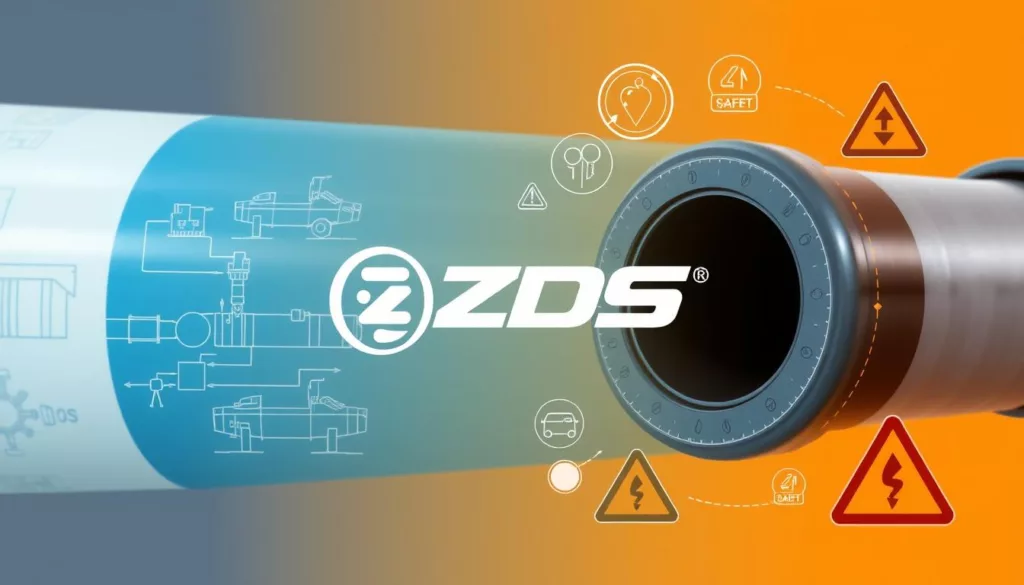
| Regulatory Focus | Primary Considerations | Standards Organizations |
|---|---|---|
| Safety | Operator Protection, Material Safety | OSHA, EPA |
| Environmental | Emissions Control, Waste Management | EPA, ISO |
Challenges in Using Adhesives for Pipeline Repairs
Using adhesive solutions in pipeline repair has big benefits. But, several challenges can affect their success. Knowing these challenges is key to good results.
Temperature and Pressure Conditions
Adhesives react differently under various temperatures and pressures. High temperatures might speed up the curing, leading to weak bonding. Low temperatures may slow down curing, causing poor adhesion. Changes in pressure can stress the bond, risking failure.
Choosing the right adhesive for expected conditions is key in pipeline repair success.
Material Compatibility
Material compatibility is a big issue in using adhesives for pipelines. Pipes made of steel, PVC, or HDPE react differently to adhesives. This affects performance. Some adhesives might not stick well to certain materials or degrade with specific substances.
Analyzing material properties and selecting compatible adhesives are crucial for lasting repairs.
Best Practices for Storing Pipeline Adhesives
Proper storage strategies boost the power of strong pipeline adhesives. Keeping them in the right conditions ensures they stick well. This is key for success in fixing pipelines.
Storage Temperature Guidelines
Adhesives should be kept cool and dry, away from sunlight and extreme heat or cold. The right temperature range is crucial to avoid damage. It helps you get dependable results and saves money on future repairs.
Shelf Life and Expiration
Knowing how long adhesives last is vital for planning projects. Each one has a set shelf life. Using them after this time can lower the quality of repairs. To find reliable adhesives, check out innovative adhesive products from trusted sources.
| Product Type | Optimal Storage Temperature (°F) | Shelf Life (Months) |
|---|---|---|
| Epoxy Adhesives | 50 – 80 | 12 – 24 |
| Polyurethane Adhesives | 60 – 75 | 6 – 12 |
| Solvent-Based Adhesives | 32 – 95 | 12 – 18 |
Case Studies: Successful Adhesive Applications
Studying successful cases of pipeline adhesives in the petroleum industry shows us their power and benefits. We’re going to look at two examples that highlight how adhesives can effectively fix pipelines.
Pipeline Repair Case Study 1
A major energy company fixed a leaky transportation pipeline using high-quality epoxy adhesives. They faced tough weather and lots of moisture. Choosing the right adhesive helped them create a strong, lasting bond. Thanks to epoxy adhesives, the leak was fixed with less downtime.
Pipeline Repair Case Study 2
An aging refinery needed repairs, and using epoxy and polyurethane adhesives was the answer. These adhesives work well with different materials because of their chemical resistance. This smart choice improved the refinery’s pipelines, showing how versatile these adhesives are.
| Key Factors | Case Study 1 | Case Study 2 |
|---|---|---|
| Adhesive Type | Epoxy Adhesives | Polyurethane and Epoxy Adhesives |
| Environmental Conditions | Extreme Temperatures and Humidity | Aging Infrastructure |
| Main Benefit | Reduced Operational Downtime | Enhanced Pipeline Integrity |
The case studies show how important it is to choose the right adhesives for pipeline repairs. With the right solutions, companies can efficiently tackle challenges and enjoy durable results.
Innovations in Pipeline Adhesive Technology
The adhesive industry is always changing. It brings new ideas to the oil and gas field. Recently, there have been big steps forward in adhesive technology. These changes have led to new products that solve problems in fixing pipelines. These adhesives work better, making them ideal for important uses. They also last longer, even in tough weather.
Emerging Adhesive Formulations
There are many new types of adhesives that are becoming popular. They stick very well and resist chemicals, perfect for fixing petroleum pipelines. Here are the main features of these new products:
- Rapid curing times for quicker repairs
- Superior flexibility to withstand movement and stress
- Enhanced resistance to harsh chemicals and temperatures
Eco-Friendly Alternatives
People are more aware of environmental issues now. So, there’s a big move towards eco-friendly adhesives. These new types are made to be kind to the environment while still being effective. They follow the rules and give companies a way to be more green. Here are their main benefits:
- Reduced volatile organic compounds (VOCs)
- Biodegradable options that break down naturally
- Less energy required for production
| Adhesive Type | Features | Environmental Impact |
|---|---|---|
| Emerging Formulations | Rapid curing, advanced adhesion, chemical resistance | Variable, depending on specific formulation |
| Eco-Friendly Alternatives | Minimized VOCs, biodegradable, energy-efficient | Low impact, sustainable production methods |
Selecting the Right Adhesive for Your Project
Choosing the right petroleum pipeline adhesive is about carefully considering many factors. You need to think about the materials you’re using, the environment where the adhesive will work, and any laws that might affect the job. Taking all these into account helps pick the best adhesive for success.
Assessing Project Needs
It’s vital to look closely at what your project needs before deciding on an adhesive. Understand the loads the adhesive must handle, what chemicals it might meet, and the typical temperature and pressure it will face. Knowing these details ensures you choose an adhesive that stands up to these challenges.
Expert Recommendations
Asking for advice from experts is a smart move. They bring years of experience and deep technical know-how to the table. Consulting with them helps you find high-quality adhesives that fit your project’s needs perfectly. This way, you ensure a strong bond and lasting durability for pipeline repairs.
FAQ
What are pipeline adhesives used for in the petroleum industry?
Pipeline adhesives are special bonding agents. They’re used for fixing and maintaining pipelines that carry oil products. These adhesives help keep the pipelines working well, even in tough conditions.
How do I choose the right adhesive for pipeline repairs?
To pick the right adhesive, consider what you need for the project. Think about the materials, environment, and rules. Experts can help you find the best adhesive for your needs.
What are the benefits of using adhesives over traditional repair methods?
Adhesives are cost-effective and cause less downtime. They work better than welding or fastening. They need less work and create strong bonds, perfect for carrying oil.
What types of adhesives are commonly used for pipeline repairs?
The most used adhesives for pipelines are solvent-based, epoxy, and polyurethane. Each has its benefits. These include quick drying, resistance to chemicals, and toughness in harsh environments.
How do environmental conditions affect adhesive performance in pipelines?
Temperature and pressure changes affect how well adhesives work. It’s important to choose adhesives made for your pipeline’s specific conditions.
What is the shelf life of pipeline adhesives?
The shelf life of adhesives varies, but it’s on the packaging. Keep them in cool, dry places. Ensure you use them before they expire to keep them effective.
Are there any regulatory standards for adhesives used in the petroleum industry?
Yes, there are safety and environmental rules for adhesives in oil industries. It’s important to follow these to ensure safety and protect the environment.
What are some best practices for storing pipeline adhesives?
Store adhesives in places that are cool and dry, away from sunlight and heat. Follow the storage temperatures recommended for each product to keep them in good condition.
Can pipe material compatibility affect adhesive performance?
Yes, it can. Different materials can affect how well adhesives bond. When choosing adhesives, it’s crucial to think about the materials of the pipes.
What innovations are being made in adhesive technology for pipelines?
New adhesive technologies are emerging for tough conditions and eco-friendly options. These developments can improve how you repair pipelines while being kinder to the environment.





